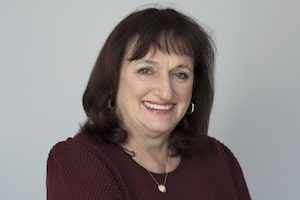These are the cookbooks that I go back to time and time again. The recipes are original, and the techniques are infallible and can be transferred to more modern approaches. Each time I use them, I learn something new. Most important, however, is that they really work. There are many more, but these books are essential.
Before I trained professionally, I learned to cook with Julia Child. I lived in Cambridge, Mass., as she did, and we all felt her aura in the neighbourhood. She was my hero. Her first book, Mastering the Art of French Cooking, was perfection. Although the recipes covered pages and pages, you could never go wrong. If you want the right way to do a French dish, Julia is still your guide. Her The Way to Cook is a little less daunting.
For Italian cooking, I feel the same way about Marcella Hazan. Her Essentials of Classic Italian Cooking is just that. No pictures, just the ones in your head when you make her authentic dishes.
Read more: What tools do you really need in the kitchen – and which can you do without?
In 1982, the cookbook world was challenged by a new concept – not just of recipes, but of style. For the first time, sidebars appeared and The Silver Palate Cookbook became an instant bestseller. Its classic Chicken Marbella appeared at every dinner party. Even the esteemed Yotam Ottolenghi gives it a nod with his much-updated Chicken Marbella in his new cookbook Simple.
In 1995, an essential book by Canadians Naomi Duguid and Jeffrey Alford appeared. Flatbreads and Flavors: A Baker’s Atlas was a travelogue, cookbook and a cultural exploration. New and diverse recipes explored the basics of life, breads and their accompaniments.
Madhur Jaffrey is next on my list. My go-to for Indian techniques and recipes. Her first and most interesting book, An Invitation to Indian Cooking came out in 1973 but has since been reissued.
Julian Armstrong’s Taste of Quebec is a must-read culinary journey exploring foodways and traditions through the province of Quebec. Her latest book, Made in Quebec, goes even deeper.
I love Nigella Lawson’s early books, namely How to Eat, which has just been reissued, and How to Be a Domestic Goddess (mainly about baking). She was and still is a breath of fresh air as she encourages people to just relax and enjoy the eating and cooking of food.
Another personal favourite is Nigel Slater, who writes so vividly that you can practically eat the food off the pages. His recipes are uncomplicated and give you flavours that require real imagination to provide. All his books are still in print.
For vegetarian, I always go back to Deborah Madison. Her more recent compendium The New Vegetarian Cooking for Everyone delivers recipes with style and substance, and any vegetable you may not be familiar with is there.
When I want answers, I go to Harold McGee, whose book On Food and Cooking should be in everyone’s library. He gives you the science behind cooking for greater understanding of how food works.
Ottolenghi made Middle Eastern cooking accessible to the world with his understanding and use of spices accentuating full-flavoured, fragrant recipes. He has a welcoming style, and while his recipes can be complicated, his latest book, Simple, features easier dishes.
This list is not complete without Salt, Fat, Acid, Heat by Samin Nosrat. An innovative book on how to cook through exploring the elements, it makes you feel the joy of cooking. A future classic.
As for desserts, my heart belongs to Richard Sax’s Classic Home Desserts. Just wonderful recipes that always work. Coffee cake, anyone?
Need some advice about kitchen life and entertaining? Send your questions to lwaverman@globeandmail.com.
 Lucy Waverman
Lucy Waverman